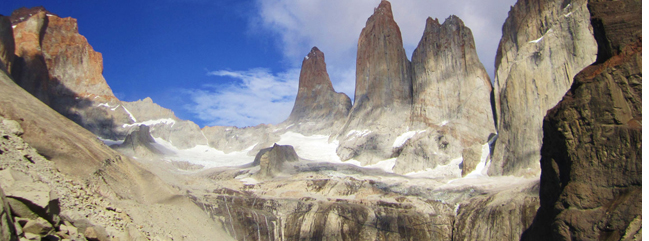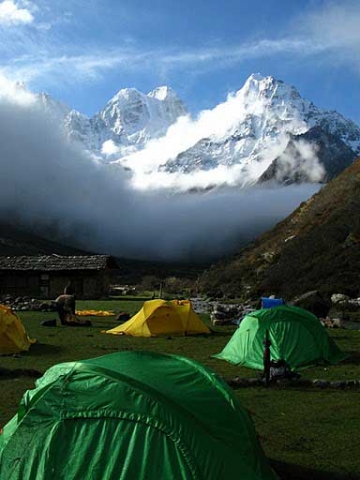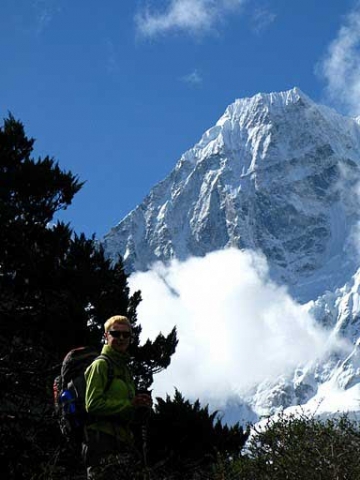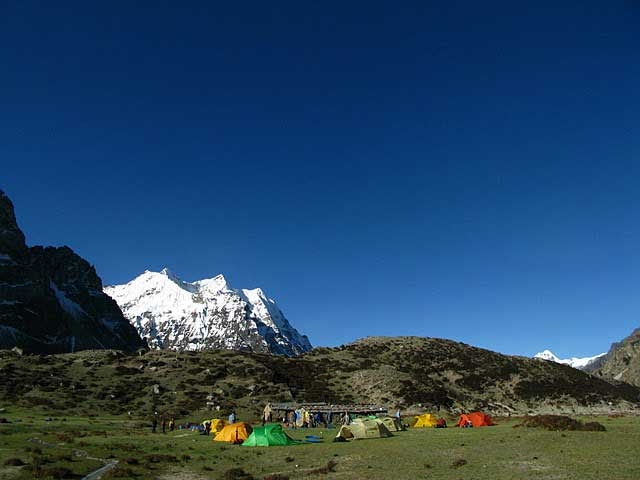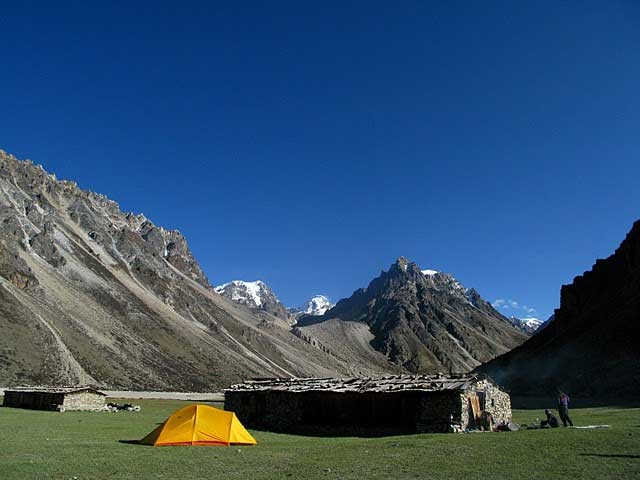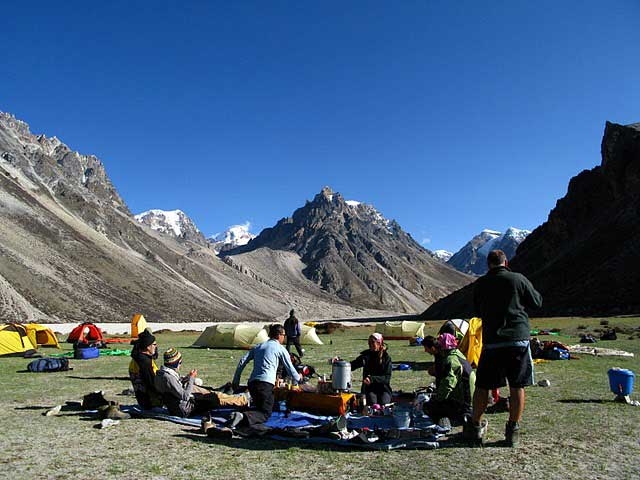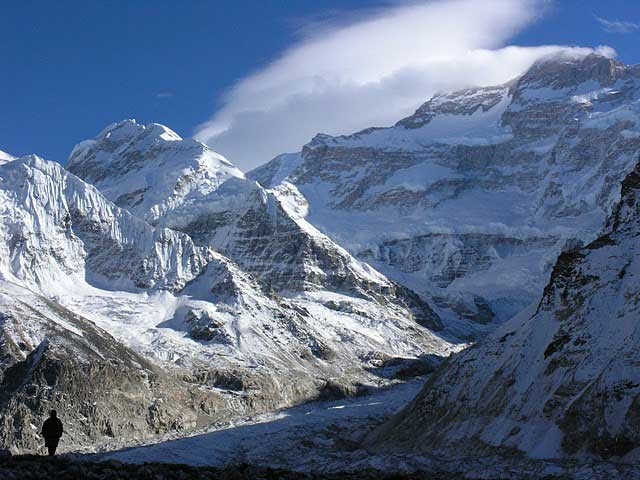This area offers the cultural diversity of Rai, Limbu, Chhetri & Brahmin villagers, with the higher regions inhabited by a people of Tibeto-Mongoloid ancestry. This trek provides exploration of extreme eastern part Nepal & should be taken is for experienced trekkers who seek complete escape into the wildest, richest part of the Himalayas.
Milke Danda is located in the far east of Nepal. This is long and high forest ridge that divides the Arun and Tamur valley in the eastern Nepal. We start trek from Basantapur and make a trek of several days up this ridge that offers views of Makalu to the west and Kanchenjunga to the east. Westerners less frequent Milke Danda area, the region are densely vegetated with rare alpine flora and the beautiful rhododendron forest. It is renowned for having the highest diversity of Nepalese Rhododendron species (29 out of 32 species reported from Nepal), With trek follows through small isolated farm villages after the major village town of Tumlingtar and Khandbari, the trail gradually continues towards higher hills, offering impressive view of the mountains all the way to Milke Danda area. Especially Milke Danda is more popular area for different kind of flowers including the Nepal’s national flower rhododendron.
Day 01 – Arrival in Kathmandu.
Arrival in Kathmandu. Transfer to the Hotel.
Day 02 – Full day sightseeing tour in Kathmandu Valley.
Full day sightseeing tour in Kathmandu Valley ( Pashupatinath ,Bouddha & Durbar Square). O/N at Hotel
Day 03 – Fly to Tumlingtar.
Early morning fly to Tumlingtar.Explore around Tumlingtar. O/N at Camp.
Day 04 – Trek to Phapung .
Trek to Phapung. O/N at camp.
Day 05 – Trek to Chainpur.
Trek to Chainpur.5/6 hrs.O/N at camp.
Day 06 – Trek to Jaljala.
Trek to Jaljala 4/5 hrs. O/N at camp.
Day 07 – Trek to Bhalukhop.
Trek to Bhalukhop .3/4 hrs.O/N at Camp.
Day 08 – Trek to Milke Danda.
Trek to Milke Danda.3/4 hrs. O/N at camp.
Day 09 – Milke Danda(3580m) excursion .
Milke Danda(3580m) excursion and see the beautiful views of Mt. Kanchanjunga and Mt.Makalu.O/N at Camp.
Day 10 – Trek down to Mayam.
Trek down to Mayam.4/5 hrs. O/N at Camp.
Day 11 – Trek to Chainpur.
Trek to Chainpur.4/5 hrs. O/N at Camp
Day 12 – Trek to Tumlingtar.
Trek to Tumlingtar takes about 4/5 hrs.O/N at Camp.
Day 13 – Fly to Kathmandu.
Fly to Kathmandu. Transfer to the Hotel. O/N at Hotel
Day 14 – Free day in Kathmandu.
Free day in Kathmandu.Cultural Dinner Program at evening. O/N at Hotel
Day 15 – Final Departure
Airport transfer for final Departure
NOTE: The above information is a guide and standard template of what we provide. The trek can be customized at your request to accommodate your specific requirements.
Note : On adventure trips of this type, weather, local politics, transport or a multitude of other factors beyond our control can result in a change of itinerary. It is, however, very unlikely that the itinerary would be substantially altered; if alterations are necessary the leader will decide what is the best alternative, taking into consideration the best interests of the whole group. Where a change does occur, we do everything we can to minimize its effect, but we cannot be responsible for the results of changes or delays.
Q.What type of shape do I need to be in, is this trip for me?
A. Trekking is suitable for average people who are moderately fit, thus no previous experience is required. Some physical fitness programs such as running, swimming, hiking is recommended before you embark on your journey. Persons suffering from a pre-existing medical condition or disease must seek medical advice before considering the trek. Whilst on the trek, it is common to experience some discomfort before being fully acclimatized.
To prepare for a strenuous trek you should begin training at least two to three months before your departure. As a guideline, an hour of aerobic exercise three to four times per week would be considered a minimum requirement. The best preparation is bushwalking involving relatively steep ascents and descents. If you can manage a couple of valley floor to ridgeline ascents per comfortable and able to enjoy the trek to the fullest. They are physically strong, sharp-witted and have an incredibly positive attitude towards a life that we would consider extremely tough. There is something about a trek in the Himalaya that draws you back time and time again. For keen walkers it is a paradise and even avowed non-walkers find that one foot just seems to follow the other, drawn by the appeal of what lies beyond.
Q. Will somebody come to pick me up at the Airport upon my arrival?
A. Yes, our Airport Representative will be there to greet you outside of Terminal Hall, he/she will be displaying an Kiwi Adventures Treks & Expedition sign board. Upon arrival, you will be transferred to your hotel.
Q. What sort of accommodation can I expect in Kathmandu and in trekking?
A. 11 night’s Trekking Guesthouse, 4 nights three/four star hotels in Kathmandu.
We use standard rooms from three/four star hotels in Kathmandu with breakfast included. Along the trekking routes teahouses/Lodges generally provide basic clean facilities with a mattress and a quilt or blanket. We can also offer you sleeping bags if needed (which need to return after the trip) but it is a good idea to always have your own sleeping equipment. We usually provide single and double rooms as well as the occasional dormitory. The dining room is downstairs around a fire. All food will be cooked to order in the little kitchen. You should not enter the kitchen unless asked to do so.
Q. What sort of food can I expect in trekking?
A. In trekking most teahouses (lodges) cook a delicious range of mostly vegetarian fare. Pasta, tuna bakes, noodles, potatoes, eggs, dhal bhat, bread, soups, fresh vegetables (variety depends on the season) and even some desserts like apple pies, pancakes, and some interesting attempts at custard. You will find a lot of garlic on the menu because it assists with acclimatization – eat some every day. In many larger villages you may find some meat on the menu. You can always get hot chocolate, tea, and hot lemon drinks, as well as soft drinks, and treats like chocolate and crisps.
Each day dinner and breakfast are used to take in the same lodge you spend the night. Lunch will be taken on the way to destination.
Q. What sort of transportation you use?
A. Kiwi Adventures Treks & Expedition is all about providing you with local insights as well as adventure, with that in mind, where we think you will get more out of your holiday by using different means of transport that is what we do. Using a variety of private transport is an integral part of our Himalaya tours and enhances the experience!
We use private tourist vehicles for sightseeing, city tours and pickups. Depending on the group size we use cars, minibus, van or land cruiser. These small light vehicles are more manoeuvrable and flexible enabling us to take you through the Narrow roads of Nepal. All the vehicles are usually air-conditioned unless we are travelling in cooler areas.
Q. What is the best season for this trekking?
A. Our trekking season extends from mid- September to May. From early September the monsoonal rains decrease. By end of September through to December the weather is usually stable with mild to warm days, cold nights. February, March, April, May, October, November, December are the best time to do trek.
Q. What is the weather & temperature like in trekking?
A. Weather in the mountains is notoriously difficult to predict. At night it is generally cooler the days are generally warm. Winter (January and February) will be bit colder but the days can be quite beautiful and warm if the sun is out. There will be bit of snow during the month of January, February and December. It is also important to make sure that you can stay warm and dry in just about any conditions. Expect the unexpected! The temperature could be as high as 20 deg C to -15 deg C low.
Q. Can I charge my digital camera or other batteries on my trip?
A. These facilities will be available in most of the places in your hotel reception by paying some service charges. Remember to bring your adapters!
Q. Is there any communication while we are on trekking?
A. There are telephones in some villages along the trekking routes from which you can make international calls.
Q. Can I use credit cards in the places visit in trekking?
A. In most cities yes, to some extent, however once you leave those cities behind, all you need is cash.
Q. How much additional money do I need per day?
A. In Kathmandu, you can allocate US$ 10 – 25 for a lunch / dinner. It’s all depends on your spending habits. US$7 to 10 US$ a day will be enough to buy bottles of water, chocolates and few drinks in trekking.
Q. Do I need to tip my guide and porters? How much would that be?
A. This is a difficult thing to gauge. We have seen everything from 20USD to 1000 USD per person for guides and porters. Tipping is not required, but a small way to show your guides and local porters thanks for their help. The level of the tip should reflect the level of personal involvement with your guide.
Q. Is the water OK to drink? Do I need to bring purifying tablets/filter?
A. In most places bottled water is readily available. If you wish to drink normal water, you need to use purifying aid, which you will need to bring with you.
Q. Are the Kiwi Adventures Treks & Expedition staff insured?
A. Our company insures all our trekking staff, including guide, cook, sherpa and porters.
Q. What essential documents do I need to bring with me on tour?
A. *Valid Passport – must be valid for up to 6 months after you return from your tour, keep a separate photocopy.
*Travel insurance, keep a separate photocopy
*Cash and Traveller’s Cheques, keep numbers and proof of purchase separate
*Flight tickets
*Emergency contact numbers for T/C’s, banks, insurance, family contacts.
Q. Can I add extra days to my trekking trip?
A. A hoilday should never be about making it to the final point quickly. Along your trek we can add days at your request with additional costs to cover guides, porters, accommodation and food.
Q. Do you use yaks/porters on the trek or do we carry all of our own gear?
A. Whilst on the trek, our porter will take care of your luggage. All you need to carry is your small day bag for your personal belongings like camera, water bottle, sun cream etc only.
Q. What opportunities will I have for shower along the trek?
A. In major places, we arrange guesthouse with hot shower. And in rest of the places, hotel water in bucket will be provided for shower; it would cost you extra about USD 3-4 per shower.
Q. Do you know about how many total miles the trek is?
A. Total distance of the entire trek is about 75 miles.
Cost Includes
• Airport / Hotel / Airport pick up & drop by private car / van / bus.
• Standard twin sharing accommodation in four/five star hotel in Kathmandu breakfast included.
• Sightseeing/Monument entrance fees.
• Guided city tour in Kathmandu by private car / van / bus.
• Full board meal during camping, prepared by our cook with Tea & coffee.
• Tented accommodation and equipment during the camping trek. (We will provide fully water proof two men tents, dining tents, kitchen gear, dining table, chairs, toilet tents, shower tent etc.)
• A government licensed English speaking Guide during the trek. A cook and the required number of porters, their food, accommodation, salary, insurance, equipment and medicine.
• Boiled and purify drinking water for the trek.
• All special trekking permits & fees.
• Surface Transfer to and from Kathmandu.
• Flight cost from Kathmandu – Taplejung – Kathmandu including airport departure taxes in both airport.
• All our government taxes.
• Tourist service charge, vat.
• Official expense.
Cost Excludes
• Lunch and dinner whilst in Kathmandu.
• Your travel insurance (compulsory).
• International airfare and airport departure tax.
• Nepal entry visa, you can obtain a visa easily upon your arrival at Tribhuwan International Airport in Kathmandu. (US$ 25 or equivalent foreign currency is required to obtain Tourist Visa with Multiple Entry for 15 days. Likewise, Tourist Visa with Multiple Entry for 30 days can be obtained by paying US $ 40 or equivalent foreign currency. Similarly, Tourist Visa with Multiple Entry for 100 days can be obtained by paying US $ 100. You will also require 2 passport size photos.)
• Items of a personal nature such as alcoholic drinks, cold drinks, laundry.
• Personal trekking Equipment.
• Tips for trekking staff. (Tipping is expected.)
• Any others expenses which are not mentioned on Price Includes section.
